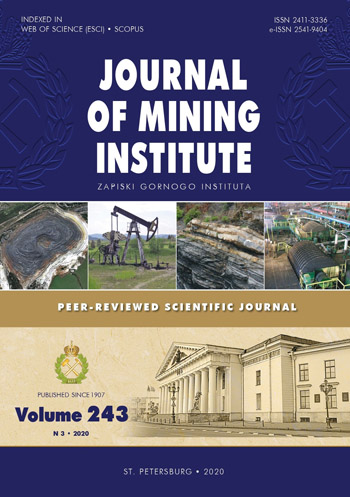Theoretical analysis of frozen wall dynamics during transition to ice holding stage
- 1 — Ph.D. Researcher Mining Institute of the Ural Branch of the Russian Academy of Sciences
- 2 — Research Assistant Mining Institute of the Ural Branch of the Russian Academy of Sciences
- 3 — д-р техн. наук Head of Department Mining Institute of the Ural Branch of the Russian Academy of Sciences ▪ Orcid ▪ Scopus
Abstract
Series of calculations for the artificial freezing of the rock mass during construction of mineshafts for the conditions of a potash mine in development was carried out. Numerical solution was obtained through the finite element method using ANSYS software package. Numerical dependencies of frozen wall thickness on time in the ice growing stage and ice holding stage are obtained for two layers of the rock mass with different thermophysical properties. External and internal ice wall boundaries were calculated in two ways: by the actual freezing temperature of pore water and by the temperature of –8 °С, at which laboratory measurements of frozen rocks' strength were carried out. Normal operation mode of the freezing station, as well as the emergency mode, associated with the failure of one of the freezing columns, are considered. Dependence of a decrease in frozen wall thickness in the ice holding stage on the duration of the ice growing stage was studied. It was determined that in emergency operation mode of the freezing system, frozen wall thickness by the –8 °C isotherm can decrease by more than 1.5 m. In this case frozen wall thickness by the isotherm of actual freezing of water almost always maintains positive dynamics. It is shown that when analyzing frozen wall thickness using the isotherm of actual freezing of pore water, it is not possible to assess the danger of emergency situations associated with the failure of freezing columns.
